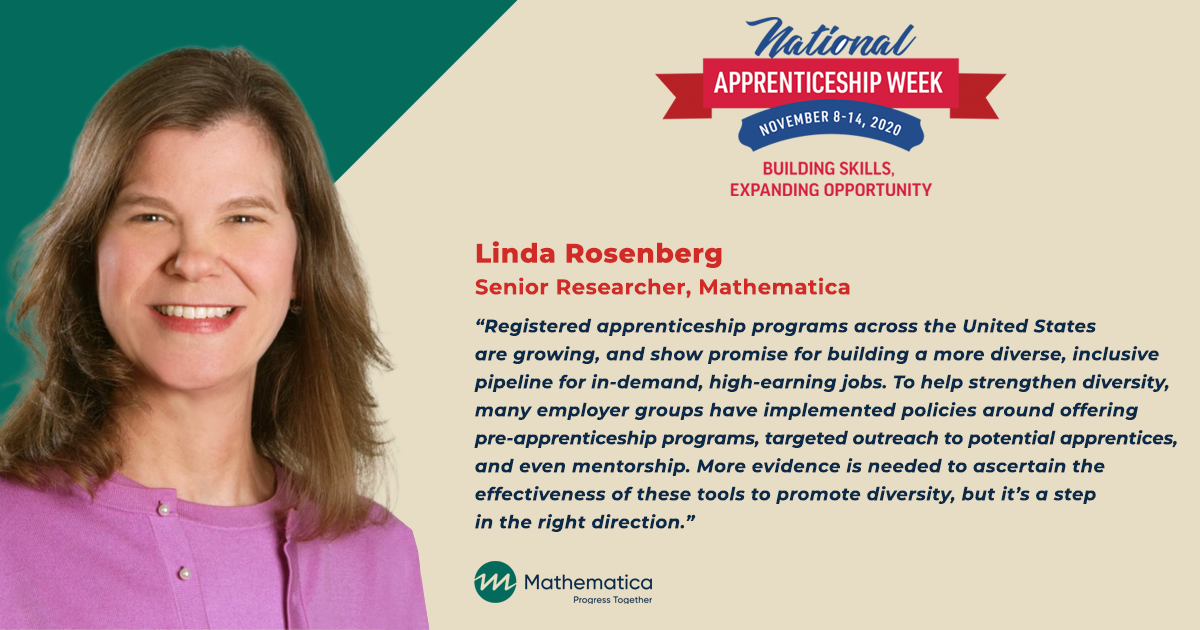From November 8 to 14, business leaders, job seekers, employers, researchers, and others celebrate National Apprenticeship Week in the United States. As the nation struggles to overcome COVID-19’s impact on jobs and the economy, the evidence suggests that apprenticeships may be able to meet the needs of both job seekers and employers by increasing earnings and boosting soft skills. Nevertheless, there is more to be done to ensure that these programs support equity and opportunity for all. At Mathematica, we’re studying tools, policies, and programs intended to expand apprenticeship programs and create more diversity within them. Here are some examples of these efforts:
- Along with our partners at the Urban Institute and Social Policy Research Associates, we’ve analyzed state efforts under recent State Apprenticeship Expansion investments from the U.S. Department of Labor (DOL). One trend observed is an eagerness to grow these programs beyond traditional occupations and industries (such as construction), and to apply the model to areas like information technology, health care, and aviation.
- DOL seeks to build and expand the evidence on apprenticeships, including models, components, partnerships, and strategies. Mathematica and the Urban Institute are helping to build a rigorous portfolio of evidence by carefully reviewing the existing evidence; identifying various apprenticeship models and approaches used in the Scaling Apprenticeship Through Sector-Based Strategies grants, Closing the Skills Gap grants, and other DOL apprenticeship grants; and assessing whether and how existing models could be evaluated.
- Through our work with the Schultz Family Foundation, we’re exploring data that surfaces insights on connecting youth to jobs, apprenticeships, and internships. Using the Bureau of Labor Statistics’ monthly labor force statistics for youth unemployment by age group, race and ethnicity, and gender, and the Current Population Survey’s data on youth unemployment in metropolitan areas, we were able to produce semiannual snapshots for specific demographic groups and geographic areas. Our analysis found that efforts to connect youth with employers looking to hire would be better served by more timely and detailed information on the scale and nature of youth unemployment.
Learn more about Mathematica’s studies of apprenticeship and other employment programs by visiting our website.

